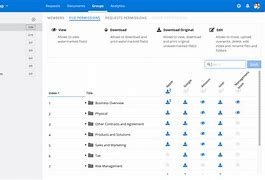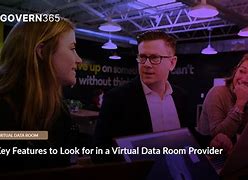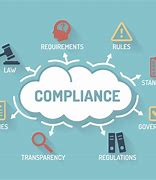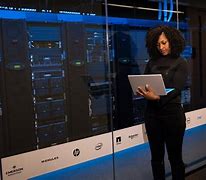
- Virtual Data Rooms vs. Traditional File Sharing: Which Wins?
- What is a Virtual Data Room?
- What is Traditional File Sharing?
- Virtual Data Rooms vs. Traditional File Sharing: A Detailed Comparison
- When to Use a Virtual Data Room
- When to Use Traditional File Sharing
- Choosing the Right Solution for Your Needs
- Conclusion: VDRs for Enhanced Security, Data Management, and Collaboration

In today’s digital world, businesses are constantly looking for ways to streamline their operations & improve efficiency. One area where technology has made a significant impact is in the way companies share sensitive information. Traditional file sharing methods, like email attachments & cloud storage platforms, have been the go-to solutions for years. However, with the rise of complex transactions & an increased focus on security, a new player has emerged: virtual data rooms (VDRs) .
VDRs are secure, cloud-based platforms designed specifically for sharing & managing large amounts of sensitive data. They offer a wide range of features & benefits that can be a game-changer for businesses involved in mergers & acquisitions, due diligence, legal proceedings, & more. But are VDRs truly better than traditional file sharing? Or are they just another passing fad?
This article will delve into the pros & cons of both virtual data rooms & traditional file sharing, providing a comprehensive comparison to help you decide which option is best suited for your business needs.
Virtual Data Rooms vs. Traditional File Sharing: Which Wins?
In today’s digital age, securely sharing sensitive information is paramount, especially during critical business processes like due diligence and mergers and acquisitions (M&A). Two prominent options emerge: virtual data rooms (VDRs) and traditional file sharing platforms. While both offer file sharing capabilities, the level of security, functionality, and overall efficiency can vastly differ.
This article delves into the nuances of each approach, offering a thorough comparison to help you determine the optimal solution for your specific needs.
What is a Virtual Data Room?
Defining a virtual data room (VDR)
A virtual data room, often referred to as a secure online platform, serves as a centralized repository for storing and sharing sensitive documents, primarily during due diligence, M&A transactions, and other complex business processes.
How a VDR works
VDRs offer a secure online environment where users can upload, manage, and share confidential documents. Users access the platform through unique credentials, granting them controlled access to specific files and folders.
Key attributes of a VDR
Secure access control: VDRs employ sophisticated access control mechanisms, allowing administrators to set granular permissions for each user. This ensures that only authorized individuals can view, download, or edit specific documents.
Granular permissions: Users can be granted varied levels of access, ranging from read-only permissions to full editing capabilities. This enables administrators to control who can access specific documents and what actions they can perform.
Watermarking and audit trails: VDRs typically embed watermarks on all documents, making it easy to track who accessed or downloaded specific files. Additionally, audit trails record every action taken within the platform, providing a thorough log of user activities.
Document management and version control: VDRs offer robust document management attributes, allowing users to organize, categorize, and search for documents easily. Version control ensures that users are always working with the latest version of a file.
Collaboration tools: VDRs often include collaboration tools like chat, annotations, and Q&A forums, facilitating efficient communication among users.
Security attributes
Encryption and data protection: VDRs employ advanced encryption techniques to secure data both at rest and in transit. Data centers are typically located in secure locations, with physical security measures in place.
Compliance with industry regulations: Reputable VDR offerrs adhere to industry regulations like GDPR and HIPAA, ensuring compliance with data privacy and security standards.
What is Traditional File Sharing?
Defining traditional file sharing
Traditional file sharing refers to the use of platforms like email attachments, cloud storage services (e.g., Dropbox, Google Drive), or FTP servers to share documents. These platforms offer a more basic approach to file sharing, often lacking the advanced security and management attributes found in VDRs.
Common file sharing platforms
Common platforms used for traditional file sharing include:
- Email attachments: Sharing files via email is a straightforward approach, but it can lead to security concerns, particularly when dealing with sensitive information.
- Cloud storage services: Cloud storage services like Dropbox and Google Drive allow users to store and share files online. While offering convenience, they lack the granular access controls and security attributes of VDRs.
- FTP servers: FTP servers are commonly used for transferring files between computers. However, they typically lack sophisticated security measures and audit trails.
benefits of traditional file sharing
Ease of use: Traditional file sharing platforms are generally easy to use, requiring minimal setup and technical knowledge.
Cost-efficacy: Many traditional file sharing options are complimentary or offer affordable plans, making them an attractive option for businesses with limited budgets.
Wide accessibility: Traditional file sharing platforms are widely accessible, with most users having accounts on cloud storage services or email.
Virtual Data Rooms vs. Traditional File Sharing: A Detailed Comparison
To understand which solution optimal suits your needs, let’s examine a detailed comparison of VDRs and traditional file sharing platforms across key areas:
Security and Confidentiality
VDR security measures: VDRs prioritize security through multiple layers of protection, including:
- Encryption: Data is encrypted both at rest and in transit, safeguarding it from unauthorized access.
- Access control: Granular permissions ensure that only authorized users can access specific files and perform specific actions.
- Audit trails: Detailed logs track all user activity, providing transparency and accountability.
- Physical security: Secure data centers with physical access controls further enhance data protection.
Traditional file sharing security limitations: While traditional file sharing platforms offer some basic security attributes, they often lack the robust protections of VDRs. Key limitations include:
- Limited access control: Many platforms offer only basic access control, making it difficult to restrict user permissions.
- Lack of audit trails: Many platforms don’t offer detailed audit trails, hindering the ability to track user activity.
- Vulnerability to unauthorized access: Shared files can be accessed by unintended recipients, raising security concerns.
Data Management and Organization
VDR attributes for efficient data organization: VDRs excel in managing large datasets, offering attributes like:
- Document indexing: VDRs automatically index documents, enabling users to quickly search for and find specific files.
- Customizable folder structures: Users can create and organize folders according to their needs, enhancing data organization and accessibility.
- Version control: VDRs track all document versions, ensuring users are working with the latest updates.
- Bulk uploads and downloads: VDRs facilitate efficient uploads and downloads of large volumes of data.
Traditional file sharing limitations in managing large data sets: Traditional file sharing platforms can struggle to manage large data sets effectively, often lacking attributes like:
- Limited search capabilities: Searching through large volumes of files can be challenging, especially without robust indexing capabilities.
- Lack of version control: Version control is often limited, making it difficult to track changes and revert to previous versions.
- Challenges in organizing files: Manually organizing large datasets can be time-consuming and prone to errors.
Collaboration and Communication
VDR collaboration tools: VDRs offer robust collaboration attributes, enabling efficient teamwork during critical business processes:
- Chat: Integrated chat tools facilitate real-time communication among users.
- Annotations: Users can highlight and annotate documents, enabling discussion and feedback.
- Q&A forums: Dedicated forums offer a centralized platform for asking querys and receiving answers.
Traditional file sharing limitations for collaboration: Traditional file sharing platforms typically offer limited collaboration attributes, hindering efficient teamwork:
- Limited communication tools: Basic platforms may lack robust communication attributes like chat or annotations.
- Challenges in managing feedback: Tracking and managing feedback across varied platforms can be cumbersome.
- Lack of centralized platform: Collaboration often occurs across multiple platforms, potentially leading to disorganization and confusion.
Due Diligence and M&A Transactions
VDRs for streamlined due diligence: VDRs play a crucial function in streamlining due diligence processes during M&A transactions:
- Secure data sharing: VDRs offer a secure platform for sharing sensitive documents with potential buyers or investors.
- Efficient document access: Users can access documents quickly and easily, accelerating the due diligence process.
- Collaboration attributes: VDRs enable efficient communication and collaboration among all parties involved in the due diligence process.
- Streamlined communication: VDRs offer a centralized platform for communication, reducing the risk of miscommunication or delays.
Using VDRs in mergers and acquisitions: VDRs are essential for managing sensitive data during M&A transactions, providing:
- Secure document storage: VDRs offer a secure repository for confidential documents, including financial statements, contracts, and other proprietary information.
- Controlled access: VDRs allow administrators to grant specific access permissions to varied parties involved in the M&A process.
- Audit trails: Detailed logs record all user activity, ensuring accountability and transparency.
Traditional file sharing limitations in due diligence: Traditional file sharing platforms can pose significant challenges during due diligence, including:
- Security concerns: Sharing sensitive information via traditional platforms can lead to security breaches and data leaks.
- Limited document management: Lack of robust document management attributes can hinder the efficient organization and access of files.
- Challenges in collaboration: Limited collaboration tools can make it difficult to coordinate with all parties involved.
When to Use a Virtual Data Room
Consider using a VDR when:
- Complex transactions: VDRs are ideal for managing sensitive data during complex transactions, such as M&A, due diligence, and fundraising.
- Large volumes of sensitive data: VDRs efficiently handle large datasets, offering robust attributes for document management, organization, and search.
- Need for strong security and compliance: VDRs offer robust security attributes and compliance with industry regulations, essential for protecting sensitive information.
- Collaboration with multiple parties: VDRs facilitate collaboration among multiple parties, enabling efficient communication and information sharing.
When to Use Traditional File Sharing
Traditional file sharing platforms are suitable for:
- Simple file sharing needs: If you need to share basic documents with a limited number of recipients, traditional file sharing platforms may suffice.
- Sharing small files with limited security concerns: For small files with minimal security risks, traditional methods like email attachments or cloud storage may be adequate.
- Cost constraints: Traditional file sharing options can be cost-effective, especially for businesses with limited budgets.
Choosing the Right Solution for Your Needs
Choosing the right solution for your specific needs depends on several factors:
- Assess your specific requirements: Determine the level of security, data volume, and collaboration required for your project.
- Consider the level of security, data volume, and collaboration needs: VDRs are ideal for high-security projects involving large datasets and multiple parties.
- Evaluate budget and cost-efficacy: Weigh the cost of a VDR against the benefits it offers, considering the potential risks of using traditional file sharing methods.
Conclusion: VDRs for Enhanced Security, Data Management, and Collaboration
VDRs offer superior security, data management, and collaboration capabilities compared to traditional file sharing platforms. They are an essential tool for due diligence, M&A transactions, and other sensitive projects, where data security, organization, and efficient collaboration are paramount.
While traditional file sharing has its uses, VDRs offer a more secure, efficient, and thorough solution for managing sensitive data. By choosing the right platform, you can ensure the secure and efficient sharing of critical information, protecting your business and its valuable assets.

















